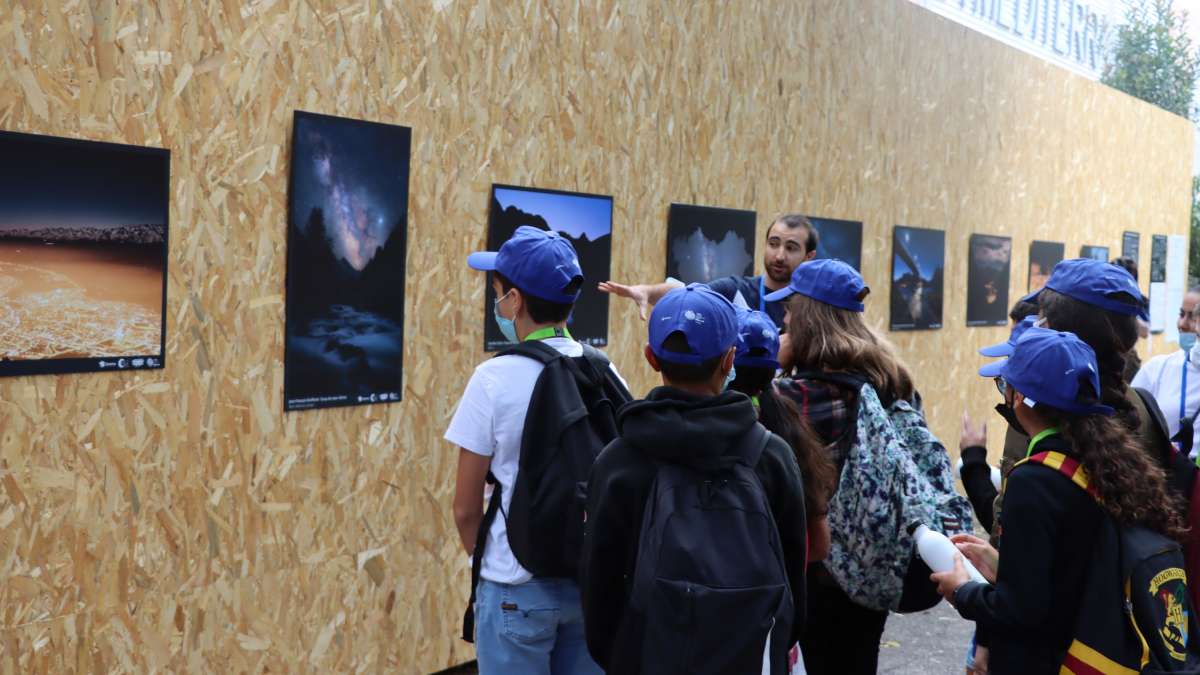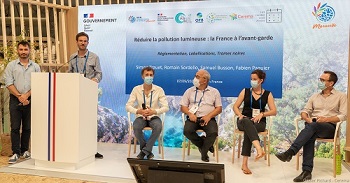This article is part of the folder : Nature en Ville : développer les solutions fondées sur la nature dans le milieu urbain
See the 56 news related to this folder
Present at the Forum of exchanges on innovative solutions as well as at the "Espaces générations open to the general public, Cerema's experts contributed to the dissemination of best practices in the fight against light pollution and maintaining or restoring the ecological continuity that is essential to nature.
Held every four years, the IUCN (International Union for Conservation of Nature) Congress is the world's largest conservation event in the world. The Congress took place in Marseille from 4 to 11 September 2021. It brought together participants from 192 countries, in person and virtually: governments, civil society, indigenous peoples, economic world and academia. For the first time, the general public was also welcomed to the "Espaces Générations Nature".
This year's Congress is a crucial step in supporting the negotiations expected at the 15e Conference of the Parties (COP15) of the Convention on Biological Diversity, which will establish an international framework to halt the loss of biodiversity erosion by 2030.
the FORUM: Cerema presents solutions in favour of biodiversity
Within the framework of the IUCN Forum, a public debate space dedicated to innovative solutions, Cerema, as a leading public expert, presented two solutions :
The effects of lighting on biodiversity, and solutions to mitigate them

This intervention carried out in partnership with the Museum National of Natural History and the Nice Côte d'Azur presented the issues related to to action levers that local authorities can use to reduce nuisances. Plant species are sensitive to different wavelengths, which can affect their growth, their movements, their hormonal functions, their interaction with their environment, etc. These effects are therefore to be considered when setting up lighting installations in areas where biodiversity is at stake.
The lighting sources must therefore be chosen by considering the impact of the light spectrum on biodiversity. Communities can also mobilize planning tools to reduce light pollution. reduce light pollution. Cerema has also published a series of explanatory sheets and a file on the prevention, reduction and limitation of light pollution and on the available tools on December 27, 2018.
In addition, an agent of Cerema has been invited by the OFB to to come and present the work carried out by the experts to establish the preparatory study for the project of particularly vulnerable maritime zone (ZMPV) for the North-Western Mediterranean basin. Indeed, among pressures on the marine environment, maritime traffic has been identified as a threat to the maintenance of conservation status of cetaceans, particularly the large mammals that are the fin whale and the sperm whale. Based on this France is at the initiative of the submission to the International Maritime Organization Organization (IMO) of a project for a particularly vulnerable sea area (SSSA) for the northwestern Mediterranean basin. This approach is justified by the international nature of the vessels and a particular concentration of marine mammals in this area, as well as by the plurality of sovereign States concerned: France, but also Italy, Spain and Monaco.
En savoir plus :
In the folder : Nature en Ville : développer les solutions fondées sur la nature dans le milieu urbain


 Eco-ethology, also called behavioural ecology, is an approach that is still not sufficiently taken into account in the context of the restoration of ecological continuities. It consists of to put oneself "in the skin" of an animal in order to examine all the decision-making processes that allow it to adjust its state and its situation in relation to the variations of its living environment. Thus it is possible to apprehend the behaviour of an individual in interaction with his environment by combining the characteristics of the biology of the species, the individuals within this species and the and the site in which the individual evolves. It is a universal approach that be applied everywhere in the world where life is present.
Eco-ethology, also called behavioural ecology, is an approach that is still not sufficiently taken into account in the context of the restoration of ecological continuities. It consists of to put oneself "in the skin" of an animal in order to examine all the decision-making processes that allow it to adjust its state and its situation in relation to the variations of its living environment. Thus it is possible to apprehend the behaviour of an individual in interaction with his environment by combining the characteristics of the biology of the species, the individuals within this species and the and the site in which the individual evolves. It is a universal approach that be applied everywhere in the world where life is present.